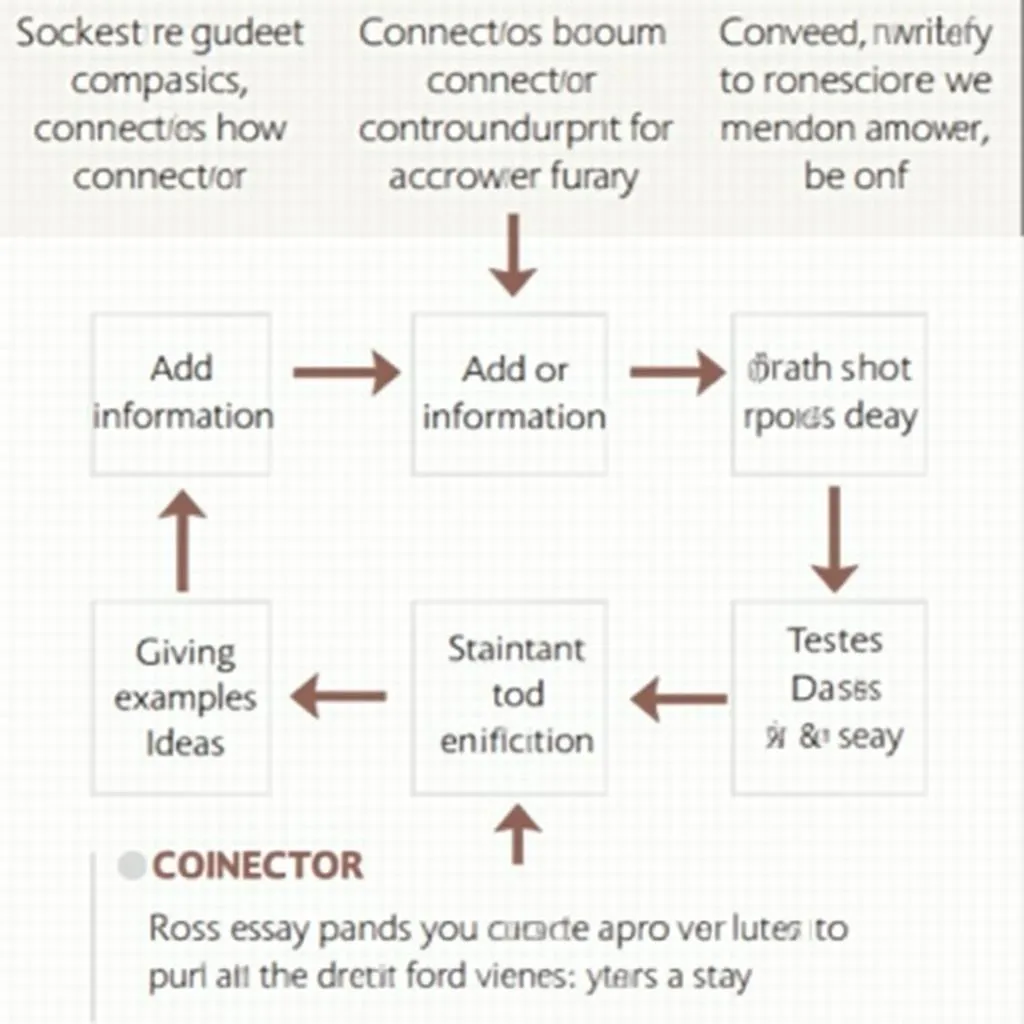Understanding the Importance of Connectors in IELTS Writing
Connectors, also known as linking words or transitional phrases, play a crucial role in IELTS Writing tasks. They help create coherence and cohesion in your essays, making your ideas flow smoothly and logically. Using a variety of appropriate connectors can significantly improve your score in the Coherence and Cohesion criterion of the IELTS Writing test.
Nội dung bài viết
- Understanding the Importance of Connectors in IELTS Writing
- Why Connectors Matter in IELTS Essays
- Common Types of Connectors for IELTS Writing
- 1. Adding Information
- 2. Contrasting Ideas
- 3. Giving Examples
- 4. Expressing Cause and Effect
- 5. Sequencing Ideas
- 6. Summarizing or Concluding
- Tips for Using Connectors Effectively in IELTS Writing
- Common Mistakes to Avoid When Using Connectors
- Practical Exercises to Improve Connector Usage
- Next Steps for Mastering Connectors in IELTS Writing
Why Connectors Matter in IELTS Essays
- Improve readability: Connectors make your writing easier to follow and understand.
- Demonstrate language proficiency: Using a range of connectors showcases your command of English.
- Enhance argument structure: They help you present ideas in a more organized and logical manner.
- Boost coherence and cohesion scores: Proper use of connectors directly impacts your IELTS Writing score.

Common Types of Connectors for IELTS Writing
Let’s explore some of the most useful connectors categorized by their functions:
1. Adding Information
- Furthermore
- Moreover
- In addition
- Additionally
- What’s more
Example: “The rise in global temperatures is causing extreme weather events. Furthermore, it is leading to the melting of polar ice caps.”
2. Contrasting Ideas
- However
- Nevertheless
- On the other hand
- In contrast
- Conversely
Example: “Some argue that technology improves productivity. However, others believe it can be a significant source of distraction.”
3. Giving Examples
- For instance
- For example
- Such as
- To illustrate
- Namely
Example: “Many countries are investing in renewable energy sources, such as solar and wind power.”
4. Expressing Cause and Effect
- Therefore
- As a result
- Consequently
- Thus
- Hence
Example: “The company failed to innovate. As a result, it lost market share to its competitors.”
5. Sequencing Ideas
- Firstly/Secondly/Thirdly
- First of all
- To begin with
- Subsequently
- Finally
Example: “To address climate change, we must first reduce carbon emissions. Secondly, we need to invest in renewable energy. Finally, we should focus on reforestation.”
6. Summarizing or Concluding
- In conclusion
- To sum up
- Overall
- In summary
- All things considered
Example: “In conclusion, while technology has its drawbacks, its benefits to society far outweigh the negatives.”
Tips for Using Connectors Effectively in IELTS Writing
- Don’t overuse connectors: Use them judiciously to maintain a natural flow.
- Vary your choices: Avoid repetition by using different connectors throughout your essay.
- Ensure accuracy: Use connectors that accurately reflect the relationship between your ideas.
- Practice regularly: Incorporate connectors into your daily writing to become more comfortable with them.
- Study model essays: Analyze how expert writers use connectors in high-scoring IELTS essays.
Common Mistakes to Avoid When Using Connectors
- Overuse of basic connectors: Relying too heavily on simple connectors like “and” or “but”.
- Misusing formal and informal connectors: Ensure you use formal connectors in IELTS Writing.
- Incorrect placement: Placing connectors in the wrong part of the sentence, disrupting the flow.
- Using connectors without clear logical relationships: Ensure the connector matches the intended meaning.
- Neglecting punctuation: Forgetting to use appropriate punctuation with connectors, especially in complex sentences.
Example of correcting a common mistake:
Incorrect: “The government should invest in education. But healthcare is also important.”
Correct: “The government should invest in education. However, healthcare is also of paramount importance.”
Practical Exercises to Improve Connector Usage
- Gap-filling exercises: Practice inserting appropriate connectors into sample IELTS essays.
- Rewriting sentences: Take simple sentences and combine them using suitable connectors.
- Connector matching: Match connectors with their appropriate functions or meanings.
- Essay analysis: Identify and categorize connectors used in high-scoring IELTS sample essays.
- Timed writing practice: Incorporate a variety of connectors while writing under test conditions.
Next Steps for Mastering Connectors in IELTS Writing
- Create a personal connector bank: Compile a list of connectors categorized by function for quick reference.
- Seek feedback: Have a teacher or experienced IELTS tutor review your essays for connector usage.
- Read extensively: Expose yourself to academic texts to observe how connectors are used in formal writing.
- Take mock tests: Regularly practice full IELTS Writing tasks, focusing on incorporating a range of connectors.
- Review and reflect: After each practice session, analyze your connector usage and identify areas for improvement.
By mastering the use of common connectors, you’ll significantly enhance your IELTS Writing performance. Remember, the key is not just knowing the connectors but using them accurately and appropriately to create well-structured, coherent essays that effectively communicate your ideas.